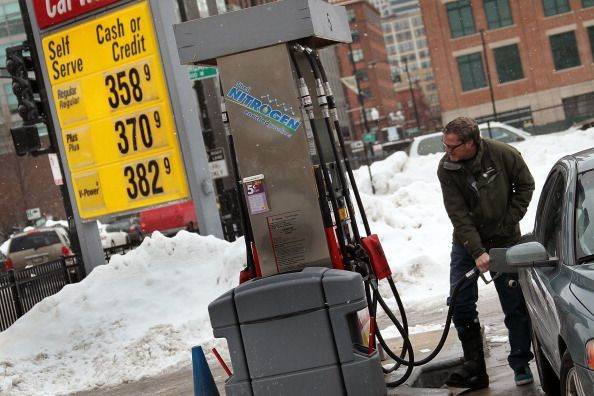Gasoline Prices: One Stat That Says A Lot About The US Economy
Analysis

What’s one, good, short-hand gauge for U.S. investors concerning whether the U.S. economic recovery can endure?
Keep an eye on the price of gasoline.
And that’s not too hard to do, for most U.S. drivers, given the abundance of gas stations in most areas. (If you’re far from one, you can get a snapshot of prices regionally, by visiting gasbuddy.com.)
Here’s the reason: The price of crude oil (a key component of gasoline) has not dropped, despite ample global oil supplies. For a variety of reasons (asset play, inflation fears, weak dollar hedge), the price of crude has risen about 80 percent early 2009, pushing the average price of unleaded regular to $3.45 per gallon in the U.S. High-cost metro areas, such as New York, Los Angeles, San Francisco and Boston, are experiencing prices over $3.70 for regular unleaded.
Now, factor in what will happen to gas prices when demand starts to pick up in the U.S.? Assuming flat oil prices, an average regular unleaded price of $3.75 seems like a done deal, and a run to $4 per gallon by early summer is possible. (Even without an oil price rise this spring/summer, gasoline prices typically rise with the start of the summer driving season, when gasoline demand increases.)
However, if oil continues its recent upward trend and passes $110 per barrel – West Texas Intermediate crude traded Monday at about $101.00 per barrel, add another 15 to 20 cents to gasoline prices. Where is the price of oil headed in the year ahead? Good question. One camp, the oil bulls, argue that emerging market demand will be more than sufficient to keep an upward pressure on the world’s most important commodity. The other camp, the oil bears, argue that sub-par U.S. job growth, continued pay-down of debt by adults, and the retirement of the Baby Boom generation, along with low GDP growth in Europe, will place downward pressure on oil’s price.
Will High Gas Prices Continue?
The key to gasoline’s impact on U.S. economic performance moving forward will be how long gasoline prices remain at elevated levels.
If gas prices rise above $3.75 per gallon for regular unleaded, U.S. GDP growth will struggle to reach 2.75 percent in 2014, and 3 percent growth is highly unlikely. It’s also hard to see how the U.S. economy could grow at an adequate rate amid sustained $3.75 gasoline: Already pinched disposable incomes will suffer another hit, taking another bite out of commercial activity.
Can the U.S. economy zip along at 3 percent GDP growth rate in face of $3.75 to $4.00 gasoline? In theory, if Americans conserve, is it possible, but the calculation here is that, at minimum, GDP growth would slow substantially.
To be sure, increased fuel efficiency has modified the gasoline price-to-U.S. GDP link – passenger cars sold in the U.S. in 2013 are about 50 percent more fuel efficient than in 1978 - but that increase in miles per gallon has not obliterated the fuel /GDP dynamic. In other words, oil remains the lifeblood of the U.S. economy: Its role in civilian and commercial transport remains large, and any price increase (or decrease) ripples through the U.S. economy.
Hence, to get a quick read on where the U.S. economy is headed, just look at the price at the gas pump.
© Copyright IBTimes 2025. All rights reserved.





















